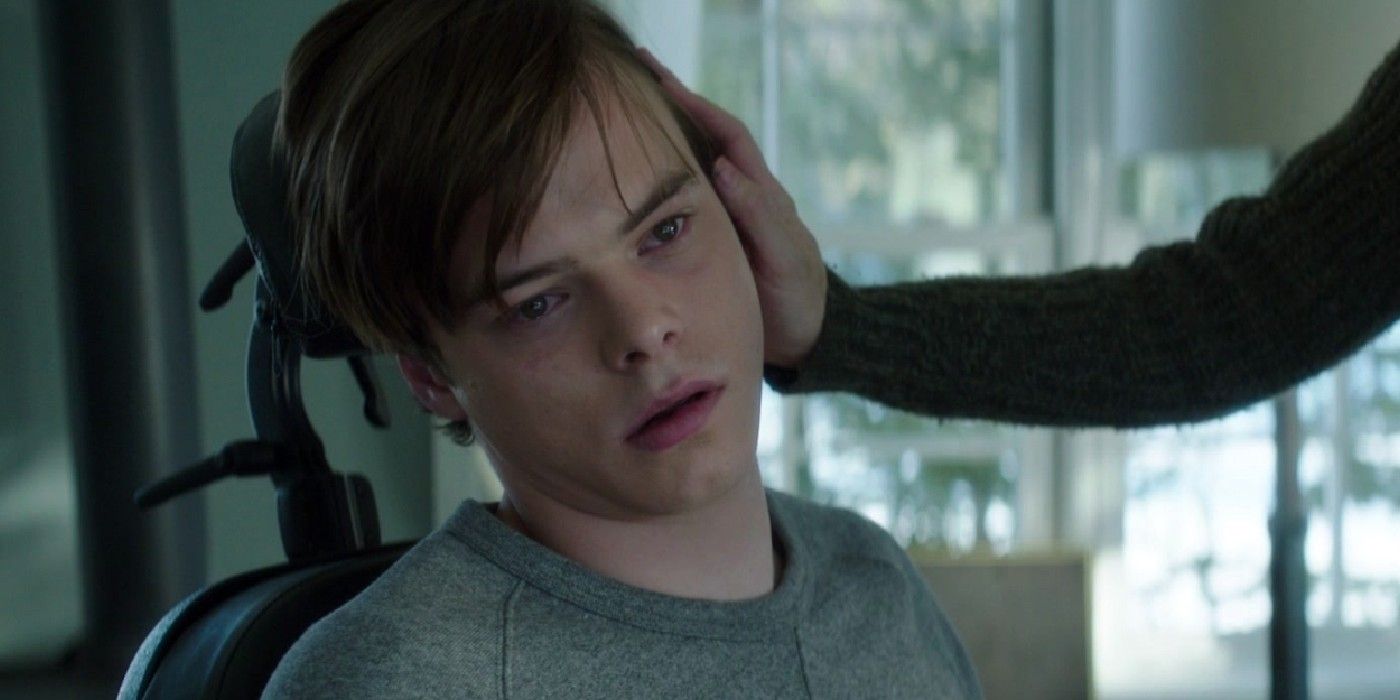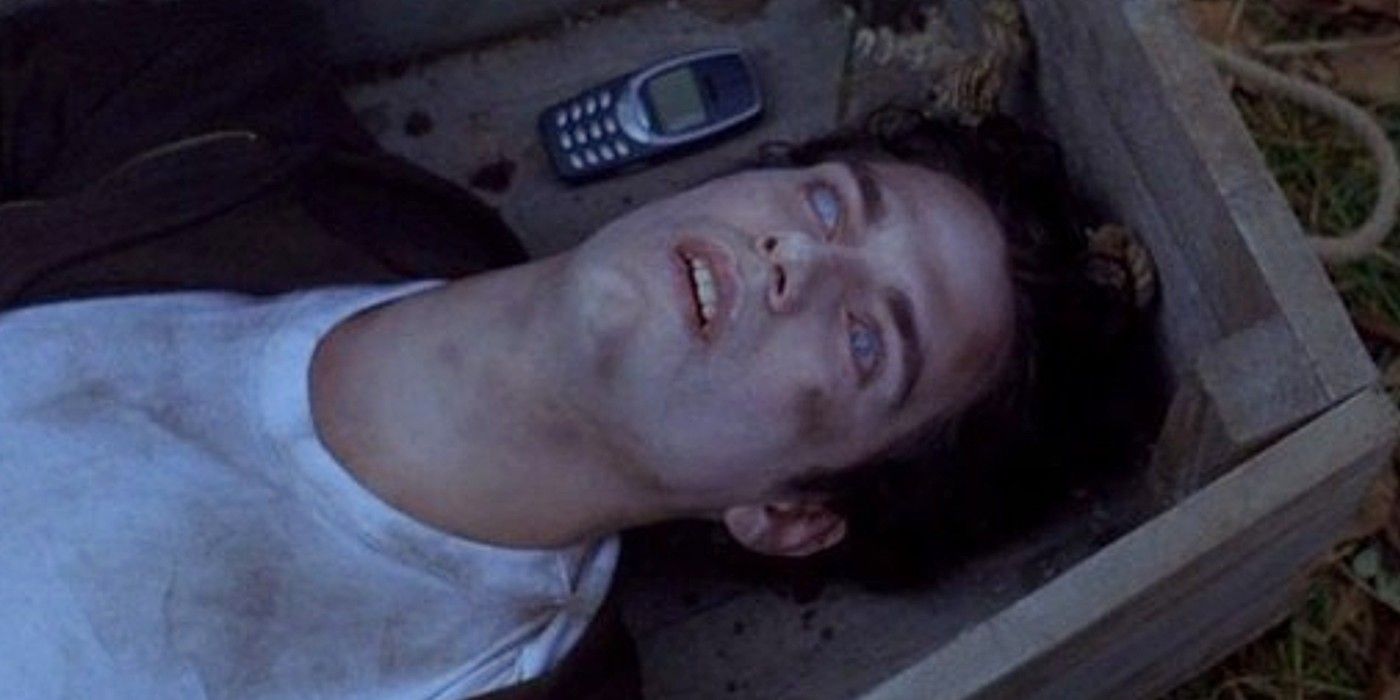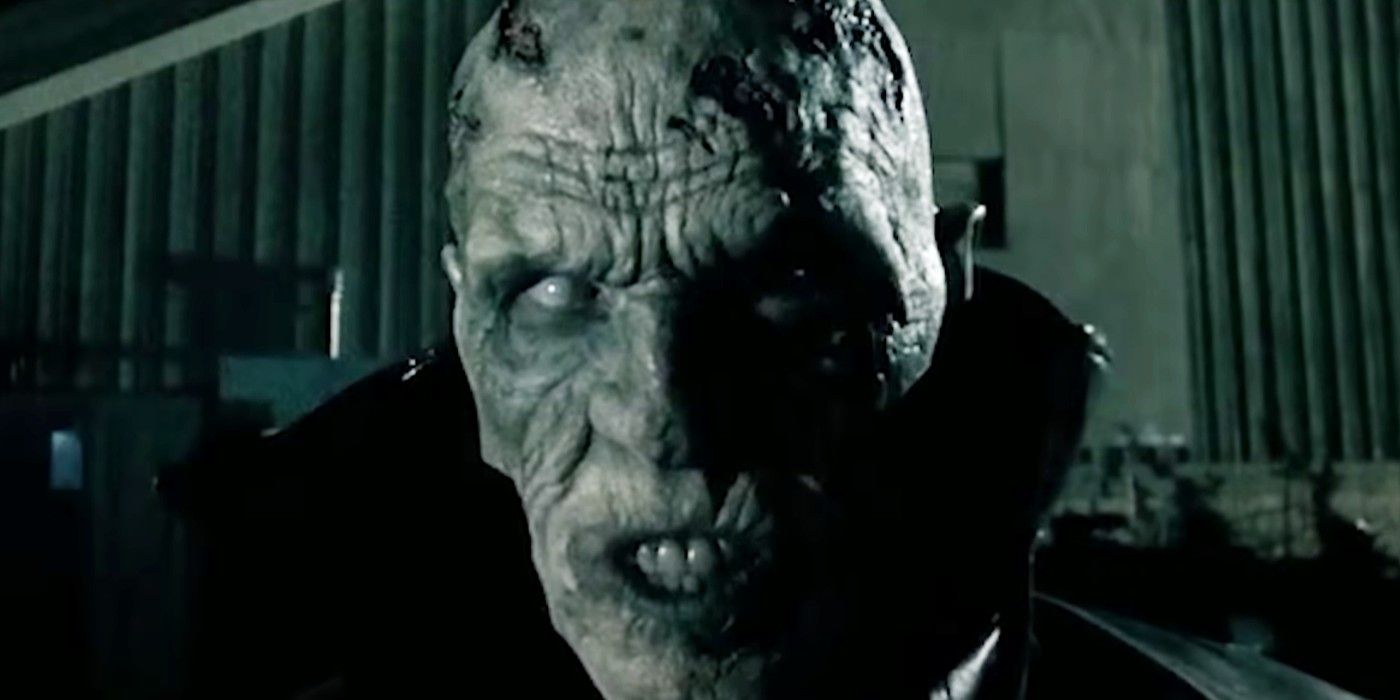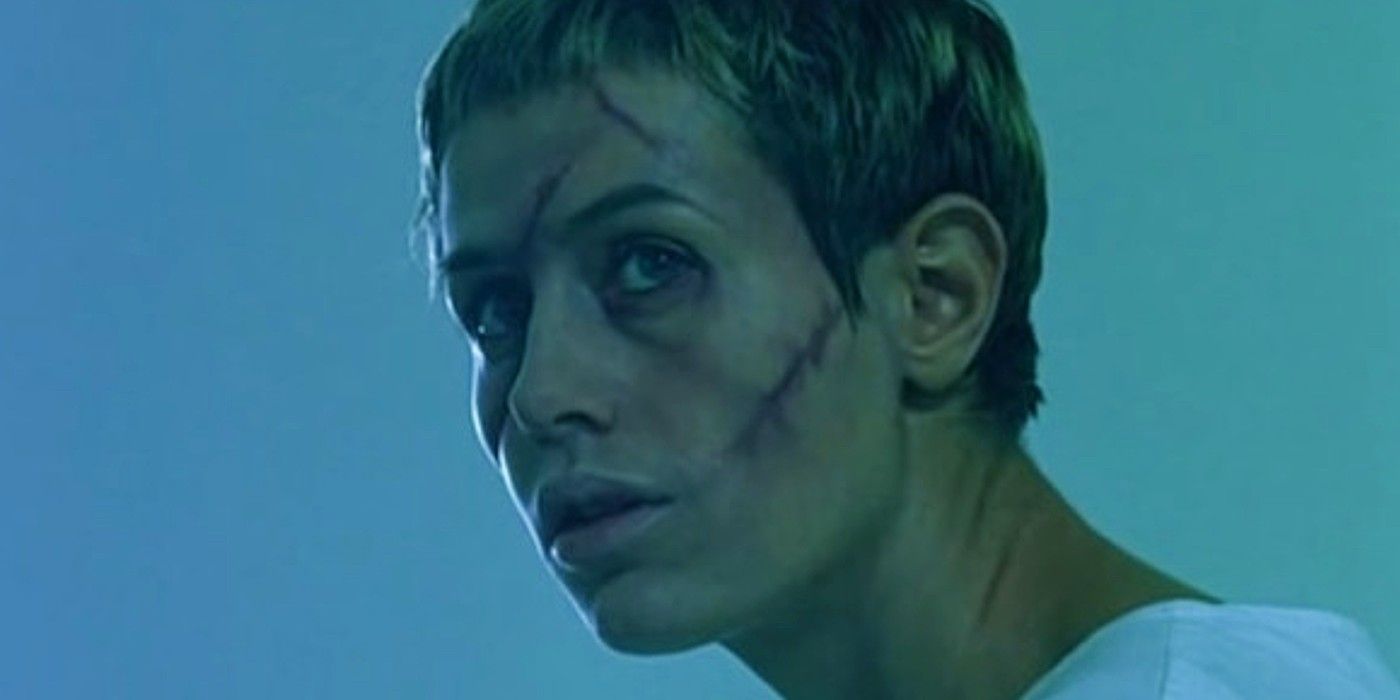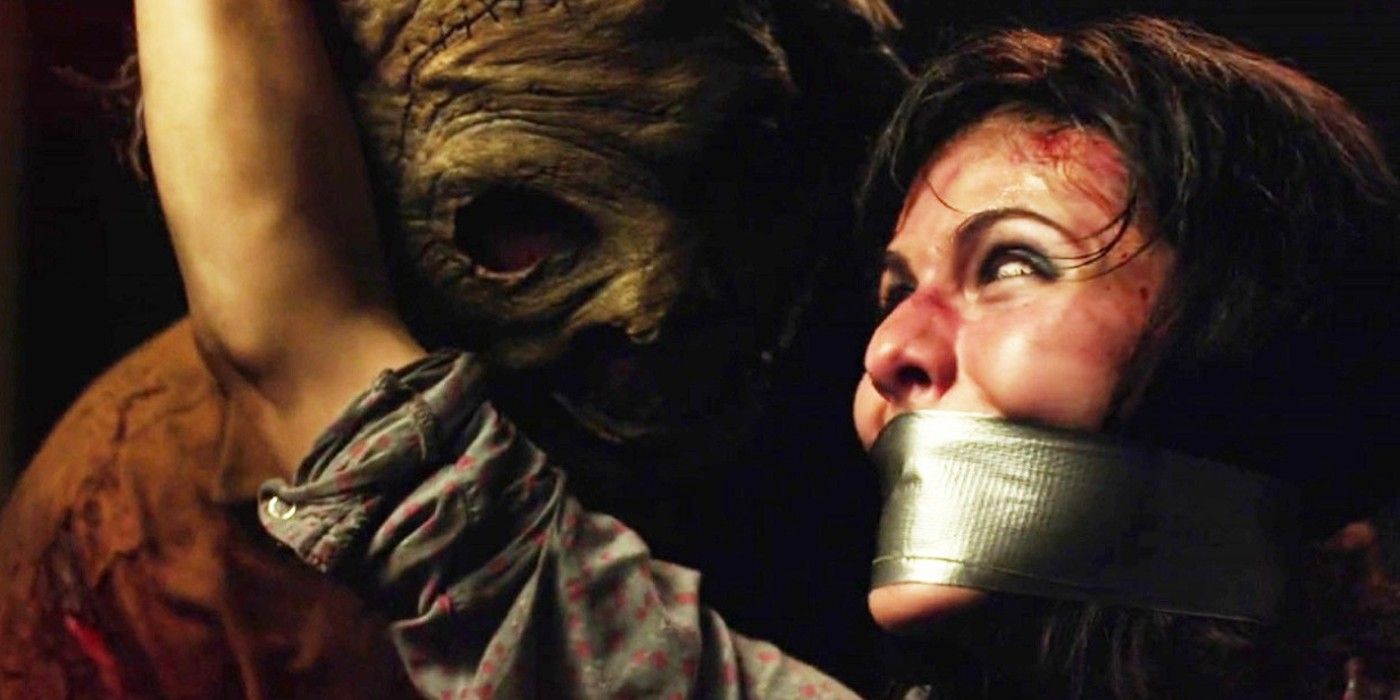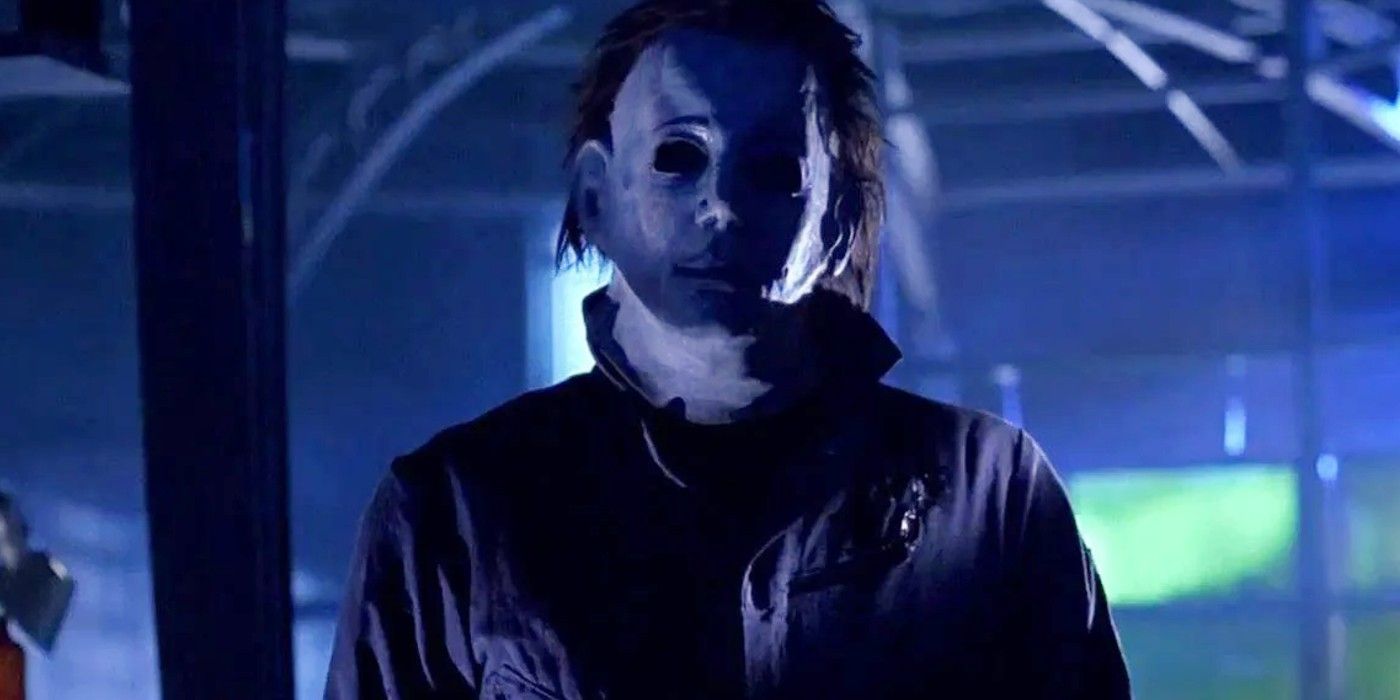Horror movies, especially the campy and schlocky ones, aren't exactly bastions of airtight logic, but that's just part of the fun. Some horror movies frighten audiences with terrors beyond human comprehension, or they let viewers enjoy the cathartic carnage free of real-world guilt or reason. Some horror movies, however, don't fit either category.
In brief, certain horror films just don't make sense. This senselessness wasn't caused by a polarizing ending, perceived plot holes, or the movie's arthouse leanings, but their stretch in suspension of disbelief or lack of plausible trains of thought. No amount of repeat viewings can force sense into these movies.
10 Jaws: The Revenge's Premise Is Too Inexplicable To Believe
The true horror of Jaws was that the great white shark was just a wild animal. There was no reason for its carnage, and the people of Amity Island couldn't control or fathom it. Every sequel undid this terror by turning the shark into a generic slasher monster, with the fourth movie being the most egregious and so-bad-it's-good example.
Jaws: The Revenge infamously had a sentient shark seeking revenge on Brody's widow, Ellen, even though the shark exploded in the first Jaws. The novelization revealed that a voodoo curse was at fault. This was still a better explanation than The Revenge's refusal to justify how a shark became self-aware, why it roars, and its psychic link with Ellen.
9 Shut In (2016) Is Hard To Believe Even On The First Viewing
Shut In's big twist was twofold. Not only was the "ghost" haunting Mary's house actually her missing patient (Tom) hiding within the walls, but her stepson (Stephen) was actually in good health. As it turns out, Stephen made a full recovery after his car accident and was only playing up his supposedly unresponsive state to hoard Mary's attention.
While these revelations may conceptually make sense, their execution says otherwise. For one, the fake-out scares that Tom caused were impossible for a child to pull off. Similarly, Stephen tricking everyone into thinking he was in an unresponsive state for so long is implausible given the number of medical professionals (including Mary herself) who examined him.
8 Hellraiser: Hellworld's Dream Twist Is Too Contrived To Be Plausible
Every Hellraiser movie after the second installment is infamously divisive, and the eighth installment was no exception. Hellworld's big twist was that Pinhead's torment of the focal teenagers was a dream, specifically one induced by psychedelics. Besides the dream twist being predictable, it was too contrived an explanation.
In brief, all five friends simultaneously experienced the same dream after The Host drugged them. It would've been more believable if The Host trapped the teens in a computer simulation and uploaded his nightmare of choice, not leaving it to random chance with drugs. Even by Hellraiser's loose supernatural logic, Hellworld was pushing it.
7 I'll Always Know What You Did Last Summer Brought Back The Original Killer For No Reason
At first, I'll Always Know What You Did Last Summer was a legacy sequel to the first two movies. By now, the Fisherman Killer was a well-known urban legend and the original cast had left Southport. After some teens caused a fatal accident, they're stalked by the Fisherman again, who inexplicably turns out to be an undead Ben Willis, the first movie's killer.
Even ignoring the third movie's lack of build-up and explanation of Ben's apparent resurrection, Ben died in the first movie and the I Know What You Did Last Summer movies never had supernatural elements before. Ben's return was nothing but a nostalgic call-back, and all it did was make the slasher nonsensical.
6 High Tension's Twist Can Break The Entire Movie
Fight Club wasn't the first movie to have its antagonist be its protagonist's alter, but it popularized the plot twist. High Tension clearly took inspiration from Fight Club, but this came at the expense of its internal logic. In brief, Marie and the murderous trucker are one person, which rendered the movie's events impossible.
High Tension's murders could only happen if Marie was in two places at once, since her location relative to the killer wasn't properly established. Worse, there were scenes where the killer was in a location that Marie and Alex had yet to visit. As brutal as High Tension is, it's impossible to ignore this oversight on repeat viewings.
5 The Stepford Wives (2004) Undid Its Themes With A Cartoonish Twist
Though it was a romantic comedy with a dark subtext, The Stepford Wives' remake was still a horror movie at its core. The remake hinted that, like in the 1975 original, the men in Stepford killed their wives and replaced them with subservient robots. As it turns out, the wives were alive and just mind-controlled with microchips.
The problem with this new twist was that it contradicted previous scenes that played up the wives' robotic natures. Worse, this happier ending went against the story's criticisms of patriarchal societies. Though The Stepford Wives' remake has some fun moments of unintentional camp, its logic breaks the more times it's viewed.
4 Texas Chainsaw 3D's Mental Gymnastics Have To Be Seen To Be Believed
To be fair, most of The Texas Chain Saw Massacre's sequels are confusing, but this legacy sequel was one of the series' most contrived outings. Texas Chainsaw 3D is tied to the 1974 movie and, while acknowledging the Sawyer Clans' evils and Leatherface's murders, showed that Leatherface was an anti-hero.
The protagonist, Heather, was revealed to be Leatherface's long-lost cousin, and she quickly forgave him for killing her friends because they were family. Viewers understand that Leatherface is a victim, but Heather's abrupt moral shifts (before she'd even read the Sawyers' letters) and the logical lapses make Texas Chainsaw Massacre 3D particularly nonsensical.
3 The Predator Gave The Predators Nonsensical Motivations
The Predator movies' best asset was their simplicity, but the soft reboot The Predator spiced things up. Instead of only seeing the Earth as a big game preserve to hunt people on, the Predators were revealed to be fighting over humanity's fate. One side wanted to harvest people for their DNA, while the other wanted to save mankind.
With this twist in mind, The Predator and every installment before it lose all sense. The Predators' new goals don't just contradict their previous murders, but they nullified their original interpretations as alien warriors with a code of honor. The Predator's editing and confusing plot make the story even harder to understand.
2 Halloween: The Curse Of Michael Myers Is Almost Impossible To Understand
Although they're beloved, the Halloween movies have a convoluted franchise mythos. This problem peaked with the sixth entry, which gave Michael Myers a supernatural origin. That said, The Curse of Michael Myers isn't confusing because of its occult lore, but because of the editing.
Halloween 6 has two versions: the theatrical cut and The Producer's Cut. The former excised most of its exposition and its hyperactive editing makes it hard to watch. The latter restored the Cult of Thorn's convoluted story. Neither cut makes much sense, and revisiting them is difficult for even the most dedicated Halloween fans.
1 Rubber Often Gets Lost In Its Self-Satisfied Meta Statements
If its trailers were to be believed, Rubber was a parody of the B-movie revival that was popular in the 2010s. In brief, Rubber was sold as a creature feature about a sentient tire with deadly psychic powers. However, Rubber was a surreal feature-length aside about nihilism that just so happened to have a sentient tire.
Rubber's simple story of a killer tire was often distracted by existential tangents, and it's easy for viewers to lose interest and/or track of what was happening. No amount of repeat viewings can fully make sense of Rubber, especially since it keeps insisting that there's "no reason" for anything that happened.



